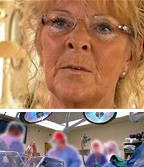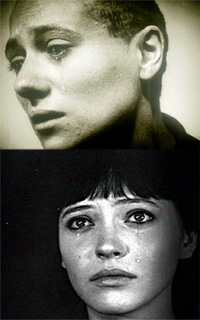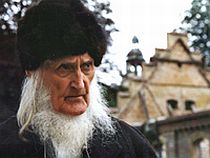Søren Slumstrup er den venlige dræber, jernnæven i fløjlshandsken. Lægerne burde kende ham efterhånden, men de slemme blandt dem – denne lille ubehagelige gruppe, som han rydder op hos – følger vel ikke med i dette heller. De er så optaget af at tjene penge og dække sig ind, da de laver ulykke efter ulykke, ser det ud til. De øver sig ikke, de efteruddanner sig ikke, de lærer end ikke af deres fejl.
Men Slumstrup er efter dem, ærligt inde i filmens billede, så venlig og flot – og tilbageholdende, tilsyneladende, og han lister den ene oplysning ud efter den anden, spiller patient og sætter sin egen knækkede tand på spil hos den hensynsløse fidusmager på torvet i Malaga. Det er vildt morsomt og dybt alvorligt. Han har min største respekt. Jeg er Slumstrup-fan.
Hans våben er en omfattende forberedelse og en omhyggelig research, som i enhver konfrontation sikrer, at han har den største viden, vel som regel kender svarene, blot skal have dem bekræftet. Og det er så fint, man glæder sig til hvert møde, blot at se ham tale i telefon er en nydelse. Den høflige detektiv.
At se ham med sit ringbind ved siden af medarbejderen fra Sundhedsstyrelsen, som garanteret har forberedt sig næsten lige så omhggeligt. Det sted er Slumstrup en kendt mand. Og hun er lige så korrekt og sprogligt tilsvarende præcis. Hun har klogt valgt sine to klare pointer: lægernes retssikkerhed, det er deres levebrød, det gælder, og at “til fare for patienten” fortolkes som “livsfare”. Her kommer slaget til stå i dokumentarens efterliv (som allerede i dag er i gang i DR Nyhederne, i patientforeningen og blandt de sundhedspolitiske ordførere). Det er filmens afgørende scene, denne lange samtale mellem lige parter ved et stort bord.
Den velskrevne speak holder gang i fortællingen, sikrer en beslutsom og energisk gennemførelse. Og det er spændende, det her, tv-timen ryger af sted, også forbi det kritiske punkt ved 40 minutter. Jeg mærkede det ikke i aftes. Alligevel har jeg problemer med klipningen, med dramaturgien. Jeg forstår ikke logikken med sammenbindingen af de tre historier, ser nok deres belysen hinanden i helheden, men ikke i de detaljer, som gør hvert enkelt klip naturligt, som gør at vi selvfølgeligt bestemte steder skal over til en af de to andre forløb.
Billeddækningen ligner lappeløsninger, og der er ubærlige gentagelser, effekterne er banale og uklædelige, og kameraarbejdet ujævnt. Men de journalistiske dyder må siges at være tydeligt til stede..
Søren Slumstrup: Læger på flugt, 2008. DR1 i aftes kl. 20. Genudsendes 3. marts 13:50. http://www.dr.dk/Dokumentar/tv/DR1/2008/0207105840.htm Søren Slumstrup lavede i sin tid: Den hvide magt, 2004, Læger uden fejl, 2003, Helles sidste dage, 2002. Jeg skrev dengang lidt om hans arbejde: http://www.dfi.dk/tidsskriftetfilm/35/research.htm












